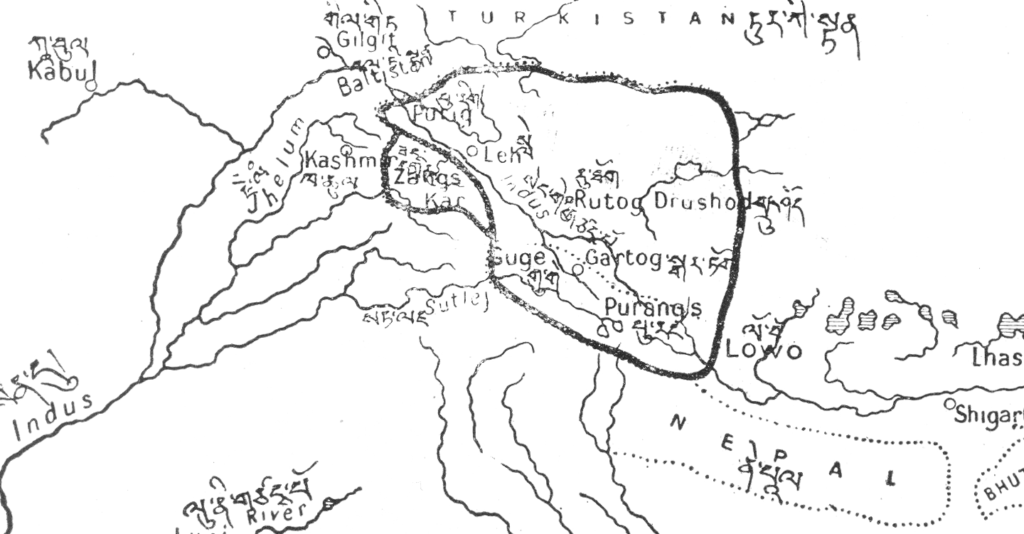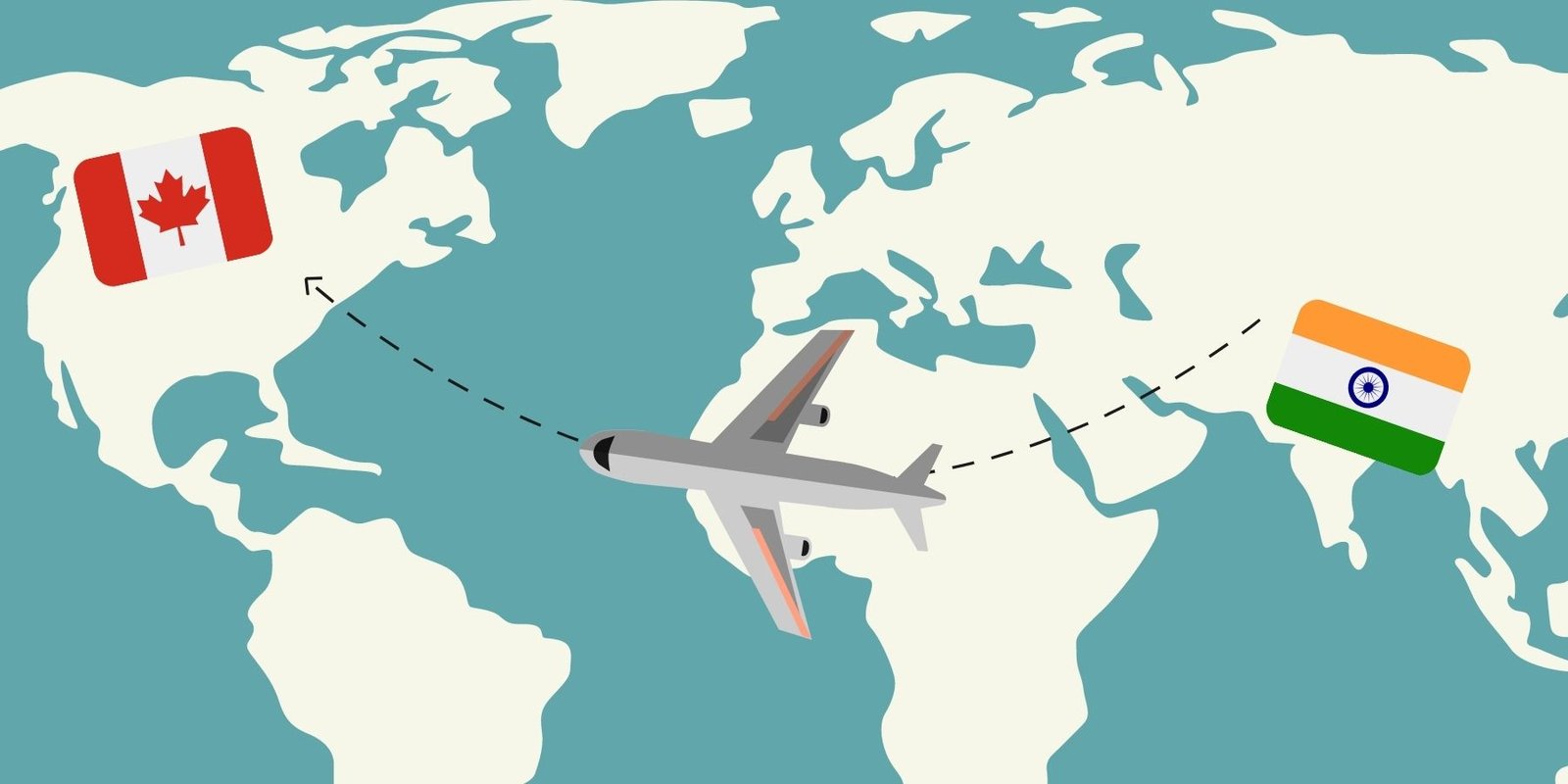Going by historical facts, India Claims Over Kailash-Manasarovar And Parts of China-Occupied Tibet is a greater truth than present day Chinese Occupied Indian Territories. This is in fact, the claim of both China today and the Dogra General Zorawar Singh then. While Zorawar Singh claimed Guge as a part of Ladakh and tried to take it over, China claims Shipki La etc for being a part of Guge and Ladakh because it’s a part of Tibetan Empire…Going by the strategic importance Minsar and Darcheng have, commanding the access to Lipulekh, Maryum and Tinker Passes and slicing G219 into two, it makes much sense for India to reassert Indian and Bhutanese sovereignty in a manner it deems fit.
Not many know that China claims both sides of Shipki La, the pass which connects India and Tibet through Himachal Pradesh – this is the pass which follows the path of Sutlej River and is one of the major trading routes between Indian side of Himalayas and the Tibetan side.

In September 1956, 20 Chinese crossed over the Shipki-la pass into India’s territory. A 27-member Border Security Force party met the Chinese the same day. The BSF were told by a Chinese officer that he was instructed to patrol right up to Hupsang Khad (4 miles within Indian territory), though Shipki La was the recognised border pass under the Panchsheel Agreement. The BSF were however advised “to avoid an armed clash but not yield to the Chinese troops.”
One need not focus on how India dealt with this and what happened after this. but what’s important is the reason for China claiming both sides of Shipki La – a historic legacy of a kingdom which was a part of Tibet some time ago. One can infer this from Luciano Petech’s A Study on the Chronicles of Ladakh where he defines the borders of Ladakh at it’s greatest extent –


The second point is of considerable interest here. This conquest is the greatest exploit of Ladakh – the conquest of the Kingdom of Guge under Sengge Namgyal. While Point B(4) mentions that Guge held both sides of Shipki La, point B on the whole defines the borders of Guge.
After the fragmentation of Tibetan Empire, the local hagiographies of Ladakh state that three brothers of the ruling family fled to the westernmost parts of Tibetan Empire and formed three kingdoms – Ladakh, Guge and Zanskar. The situation was of internecine wars and marriages all history, especially between the bigger two – Ladakh and Guge. In a span of 50 years starting from 1550, Ladakh was subjugated by Guge and Ladakh struck back, leading expeditions almost till Manasarovar. But, the final rupture came in 1614 when Guge asked for a Ladakhi princess in marriage but turned her back at the borders. Her brother Sengge Namgyal angrily declared a war against Guge and the war dragged on till 1640 when Tsaparag, the capital city of Guge fell.
After taking over the whole of Guge, which approximates to the current Ngari Prefecture of Tibet, Sengge Namgyal crossed swords with U-tsang which was then ruled by the Tsangpa Dynasty to establish the status quo. The King, Karma Tenkyong who was already harassed by the Mongol Ruler Gushi Khan yielded quickly before the Ladakhi armies led by the king in person. The Ladakhi forces advanced almost till Lhatse before imposing peace and marched back. The border was set up at Maryum La, just east of Manasarovar between both the kingdoms.

Gushi Khan struck immediately after, deposing Karma Tenkyong and giving the province to the Dalai Lama to rule. This created a new problem for Ladakh – a Mongol-Tibetan alliance under the authority of the Dalai Lama and it’s a matter of time things erupted. Around 1683, Ladakh, representing the Druk-pa school of Buddhism sided with the Druk-pa incarnate based in Bhutan in a religious with Lhasa – this quickly escalated into a war between Ladakh and Lhasa, with Tibet-Mongol troops chasing the Ladakhis deep into Ladakh. Basgo was taken after a three year siege and Ladakh petitioned the Mughals who were ruling Kashmir. The Mughal Army chased the Tibetans till Tashigang on the borders between Guge and Ladakh.
The Tibetans had no point continuing the fight with one who has the capability to invade Tibet from multiple locations between Rutok and Tawang and quickly concluded peace. Ladakh lost the territory but because of the importance of Manasarovar and Mt Kailash, Tibet allowed Ladakh to have control over Minsar and use it as it’s base for management of affairs relating to Manasarovar. The relevant portion from the treaty reads thus.

This is in fact, the claim of both China today and the Dogra General Zorawar Singh then. While Zorawar Singh claimed Guge as a part of Ladakh and tried to take it over, China claims Shipki La etc for being a part of Guge and Ladakh because it’s a part of Tibetan Empire. The 1852 Treaty between Tibet and the Dogra Kingdom ensured the status quo with a single line “The boundary between Ladak and Tibet will remain the same as before.” This is just an assertion of the 1842 treaty.

But, the Dogras of Jammu never relinquished their claims on Guge till the last. In fact, the formal title of Maharaja Hari Singh in the Treaty of Accession with India contains the words Tibbet Adi Deshadhipati(Lord of Tibet and other countries) and clearly, India inherited these claims.

The case of Minsar makes a curious read. It is understood that the last Indian official trip to Minsar happened in 1950 and 1954.
The last official to visit the region was Rigzen Ghagil Kalon, a special officer of the Government of J&K. He visited the village in 1950, and his report was subsequently forwarded by the Government of J&K to the Ministry of States New Delhi, informing it about the circumstances under which the Special Officer visited Tibet.
Rigzen Ghagil Kalon’s report titled ‘Village Minsar in Western Tibet’ and dated September 13, 1950, stated that Demchok was the last Village on Indian Border. The report also mentioned that it took ten days to reach Minsar from Demchok “The village Minsar is situated to the east of Gartok and about 32 miles west of Mount Kailash. It is a broad valley with vast plains in it. There are 68 families with 271 souls of which 120 are males and the rest females and are all adherents of Buddhism.” The report further mentions “I found there a few Garhwal tradesmen who did a lot of propaganda in my favour among the people telling them that I belonged to the National Government of J&K which is a part of India. It proved a great help to me. I asked for the recovery of revenue and the people told me that they had not the least hesitation in paying the amount to the State Government.”
…Ven. Kushok Bakula Rinpoche, then a Minister in J&K Government who in 1954, along with Sonam Khangsar, a judicial clerk of the Leh District Commissioner’s Office, visited Kailash/Manasarovar via Demchok; at that time, they collected taxes from the Minsar villagers.
Surprisingly, even Nehru didn’t voluntarily cede Minsar. In 1954, he said,
Regarding the village of Minsar in Western Tibet, which has belonged to the Kashmir State, it is clear that we shall have to give it up if this question is raised. We need not to raise it. If it is raised, we should say that we recognise the strength of the Chinese contention and we are prepared to consider it and recommend it.
Though India quoted it’s claims in the 1960 border talks with China, it makes no difference because China has repudiated every treaty signed by invading India in 1962.
It is instructive to note that Bhutan also had problems with Tibet arising out of the 1684 clash. Bhutan was allowed to retain the sacred place of Darchen Labrang near Minsar and the place was a case of frequent clash between Tibet and Bhutan till 1900. When the Treaty of Punakha was signed between Bhutan and Britain allowing the British to manage foreign affairs for Bhutan, Bhutan assumed the British will handle their Tibetan affairs to the satisfaction of Bhutan.
(In 1912), with a touch of optimism, he(King Ugyan Wangchuk of Bhutan) mentioned an even older dispute. The fifth Dalai Lama had taken away most of the lands belonging to the Bhutanese owned monastery of Tö ling Tsurpo (Tib?), a day’s journey from Lhasa. Could the British government put pressure on Lhasa to return this property? Bell duly consulted his superiors in the Government of India Foreign Department on both issues. Their conclusion was that it was ‘unnecessary to consider the question of supporting the Maharaja unless and until serious contingencies of graver importance should arise’.
Bhutan continued to administer Darchen until 1959 when it was taken over by Chinese troops. Ten years earlier Bhutan had signed a treaty with the newly independent Indian government on similar lines to the Treaty of Punakha. On Bhutan’s behalf, India raised the question of the Bhutanese enclaves with China in 1959 and 1960, but the latter refused to discuss the issue.
As it stands today, India’s position is this.
- Minsar is India’s sovereign territory and India asserted the same even after India became a Republic.
- India inherited Guge from the Dogra rulers of Jammu.
- India is the enforcer of Bhutanese claims over it’s Tibetan possessions
Going by the strategic importance Minsar and Darcheng have, commanding the access to Lipulekh, Maryum and Tinker Passes and slicing G219 into two, it makes much sense for India to reassert Indian and Bhutanese sovereignty in a manner it deems fit. Because the access to Minsar is through Demchok and not through Taklakot, it becomes a sovereign commitment for China to open G219 for Indian travel. And because the access to Darcheng is from Bhutan, India has a right to demand access to the whole of G219 from Demchok to Shigatse.
On the other hand, going by Chinese claims over Shipki La, Arunachal Pradesh and other places, it is foolish for India not to project it’s claims over the whole of Guge. In fact, that would be the best tribute India can give to two of it’s greatest conquerers, Sengge Namgyal and Zorawar Singh.
Related Article Jammu and Kashmir Includes Chitral and Parts of Kohistan
Points to Ponder – Choice to be made by Tibetans
As we have covered the historical facts and presented screenshots of the relevant treaties, the question arises for present day Tibetans. India claims over Kailash-Manasarovar and parts of Tibet, will Tibetans support India and get back Indian Territories?
As India claims over Kailash-Manasarovar and parts of Tibet and if Tibetans support India and India is able to take Kailash Manasarovar and parts of Tibet mentioned above, a new union territory may be formed of the areas that are part of present day China Occupied Tibet. Tibetans may not have political autonomy in that small portion, but they will have cultural freedom in the Indian Union Territory of Tibet. By remaining with India, Tibetans will get their Cultural Freedom and total freedom to practice their religion. Compare this with the present day Tibet that is under Chinese Control, where Tibetans are facing cultural revolution and China is destroying all the religions and cultures including Buddhism, Hinduism, Christianity and Islam.
Whereas India will continue to work towards independence of complete Tibet from Chinese Occupation and help establish a Tibetan Independent Country. Will Tibetans help India get Indian territories of Tibet from Chinese Occupation and be part of India?
Twitter Handle: @newscomworld
Instagram Handle: @newscomworld
Parler Handle: @newscommuniquecom
Subscribe our : YouTube Channel https://www.youtube.com/channel/UCnKJQ3gFsRVWpvdjnntQoAA
Like our Facebook Page https://m.facebook.com/News-Communiquecom-103788531007438/
3,160 total views









